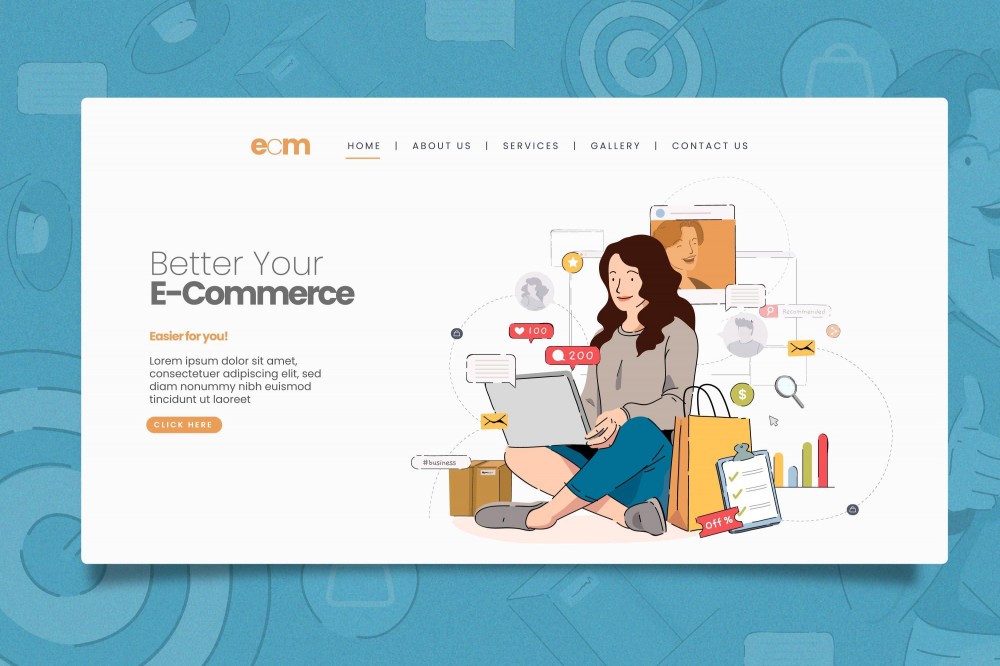In today's digital-first world, running an e-commerce business is no longer just about having a great product and a website. With competition increasing every day, brands need strategies that help them reach the right audience, at the right time, with the right message. Paid advertising is one of the most effective ways to achieve this. When executed properly, it can increase brand visibility, attract high-intent buyers and consistently drive sales.
But here's the problem: just spending money on ads doesn't guarantee results. To make paid advertising really work for your ecommerce business, you need a smart, structured, and data-driven approach. In this blog, we will walk you through the key steps to effectively use paid ads for ecommerce success.
1. Understand your goals before running ads
Every successful advertising campaign starts with a clear goal. Paid advertising can serve many purposes, such as:
- increase brand awareness
- Generating traffic to your online store
- Increase in conversions and sales
- Retargeting lost customers
- Promote seasonal offers or product launches
For example, if your goal is brand awareness, you can focus on impressions and reach. But if you want sales, your strategy should focus on conversion-focused ads. Having clear goals ensures that you spend your budget wisely and accurately measure success.
2. Choose the right advertising platform
Not all paid advertising platforms deliver the same results for every ecommerce business. The right channel depends on where your target customers spend their time.
Google Ads: Best for capturing high-intent buyers searching for specific products.
Meta Ads (Facebook & Instagram): Ideal for visual storytelling, product discovery, and retargeting campaigns.
Pinterest Ads: Great for lifestyle, fashion, and home decor products.
TikTok Ads: Powerful for reaching Gen Z and younger demographics with engaging, short-form content.
LinkedIn Ads: More suitable for B2B eCommerce businesses.
Tip: If you're building your store on a platform like Shopify or another ecommerce site builder, make sure it integrates easily with your chosen ad platform. This makes it much easier to track conversions and optimize campaigns.
3. Define and segment your audience
The greatest strength of paid ads lies in targeting. Instead of wasting money by showing ads to random people, you can reach the people most likely to buy. Use audience segmentation to refine your targeting:
Demographics: age, gender, location and income level
Interests and behavior: shopping habits, hobbies, or lifestyle choices
Custom Audience: Previous visitors to your website, email subscribers, or social media followers
Lookalike Audience: New users who share similarities with your existing customers
The more precise your targeting, the higher your chances of converting a click to a sale.
4. Create compelling ad creative
Your ad creative is the first thing people pay attention to. If it doesn't attract attention, your budget is wasted. Visuals and messaging are important for ecommerce ads.
- Use high-quality product images or videos: Showcase your product in real-life use cases.
- Highlight not just the features, but the benefits: Instead of “leather handbag,” say “stylish leather handbag that lasts for years.”
- Include clear calls-to-action (CTAs): Phrases like “Shop now,” “Get 20% off today,” or “Limited stock available” encourage action.
- Take advantage of user-generated content: Testimonials and customer photos make ads more trustworthy.
- Remember, online shoppers have short attention spans, so keep your ads simple but effective.
5. Optimize your landing pages
Even the best ads won't work if your landing page is weak. If users click on your ad but get a slow, confusing, or irrelevant page, they will quickly leave.
For effective ecommerce advertising campaigns:
- Make sure your landing page matches the ad's message and offer.
- Keep the design clean with minimal distractions.
- Highlight the product with attractive descriptions and visuals.
- Add reviews, ratings, and trust signals to build credibility.
- Simplify the checkout process to reduce drop-offs.
If you're considering a redesign, working with a professional Shopify development company can ensure that your landing pages are optimized for conversions.
6. Retarget interested buyers
Did you know that over 70% of online shoppers abandon their carts? This is where retargeting ads saves the day. Retargeting allows you to re-engage with users who interacted with your store but didn't complete a purchase.
Examples of retargeting ads:
- Showing the exact product left in the cart
- Offering a small discount to encourage checkout
- Highlighting related products that the buyer may like
- Retargeting ensures that you don't lose potential buyers who were already close to purchasing.
7. Monitor, test, and optimize regularly
The beauty of paid ads is that they provide measurable data. Don't just set up campaigns and forget about them. instead:
Track KPIs like CTR (click-through rate), CPC (cost per click), ROAS (return on ad spend), and conversions.
A/B tests different ad copies, visuals, and CTAs to see what works best.
Adjust budget to prioritize high-performing campaigns.
Remove poorly performing ads immediately to save money.
Continuous testing and optimization turns good campaigns into great campaigns.
8. Manage your budget wisely
Spending too much on ads without a clear strategy can quickly deplete your resources. Start with a medium budget, track results, and gradually increase successful campaigns. Allocate funds based on campaign goals – for example, brand awareness ads may require extensive spending, while sales-driven ads may be strictly optimized.
Conclusion
Paid advertising can be a game-changer for ecommerce businesses when used strategically. By setting clear goals, choosing the right platform, targeting the right audience, crafting engaging creative, optimizing landing pages, and constantly monitoring performance, you can maximize your ROI and achieve long-term growth.
In short, don't just spend money on ads – spend it wisely. With the right approach, paid advertising can turn your online store into a sales powerhouse. And if your ecommerce site needs a stronger foundation, partnering with an expert in Shopify development or other site-building solutions can make your campaigns even more successful.













